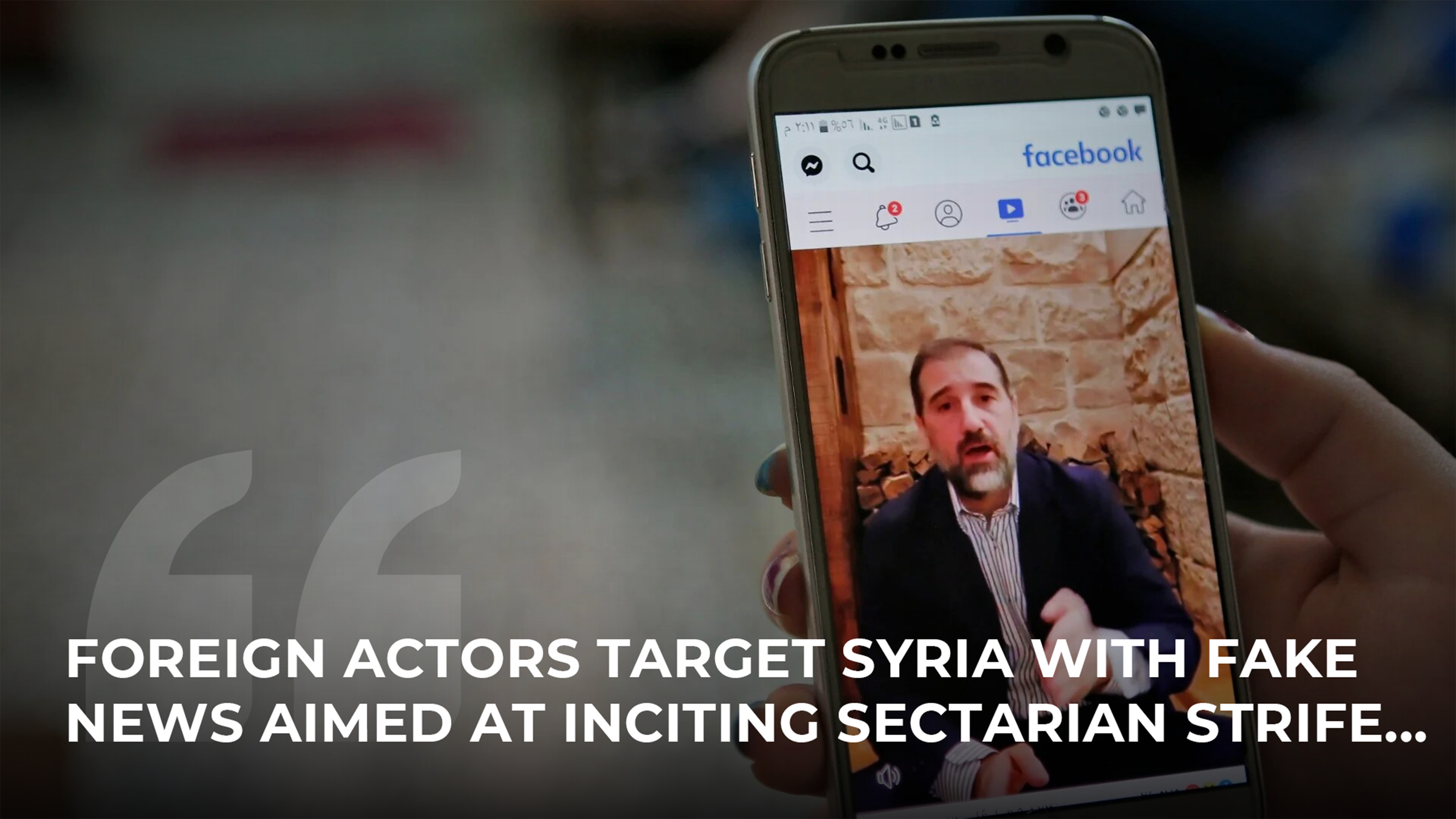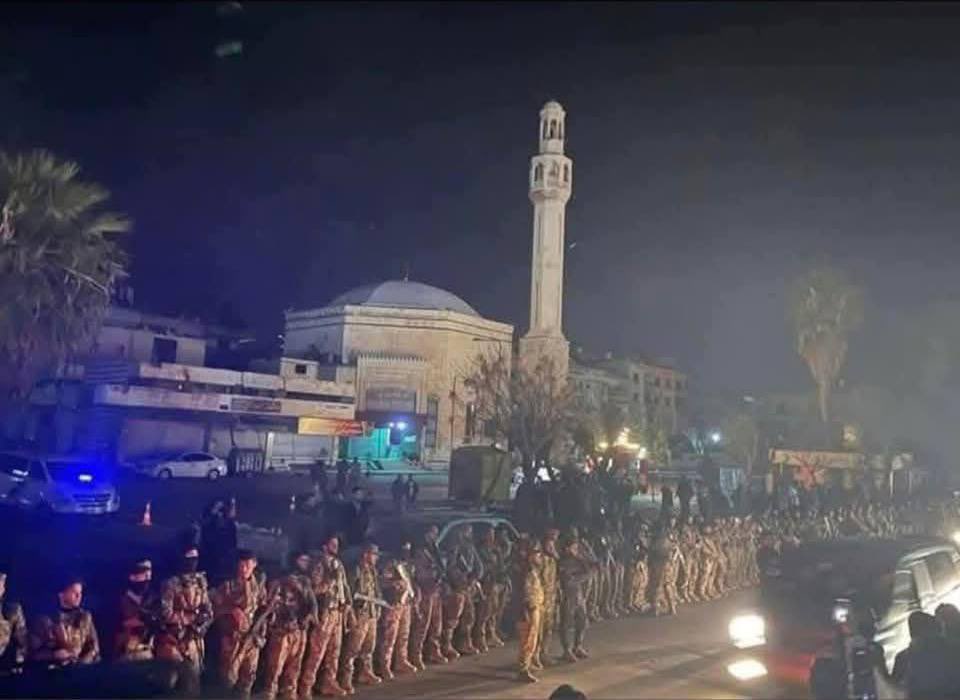
“They’re burning the village now,” a Facebook user posted as fighting erupted in the Christian and Druze majority Damascus suburb of Jaramana in April. “Please, we want the shooting to stop so we can bury the bodies that are filling up the streets,” another wrote. But even as panic spread online, conflicting messages poured in. “I am in Jaramana. Nothing is wrong,” claimed another. The confusion mirrored the chaos on the ground—and the growing war for Syria’s narrative.
In the vacuum left by the collapse of the Assad regime, Syria is battling not just Assad remnants or ISIS but a sprawling, coordinated disinformation campaign. Across social media platforms—particularly X, formerly Twitter—a torrent of false reports, AI-manipulated images and weaponized hate speech has emerged, threatening to derail fragile efforts toward stability under the new government led by President Ahmad al-Sharaa.
Weaponized Misinformation
Over the past several months, thousands of posts targeting the Syrian government have been traced to accounts linked to foreign actors, including Iran, Iraq, Lebanon and Israel. A BBC investigation monitored more than 400,000 posts and found that at least 60% of misleading content about Syria came from outside the country. “These activities are being managed from outside the country and fall under the umbrella of what is known as “electronic flies”, social media expert Hassan al-Mukhtar told Al-Ikhbariya, referring to bot networks (botnets) and coordinated propaganda efforts.
Mukhtar likened them to a pandemic “that is difficult to combat or control,” noting the strategy’s psychological warfare intent, to erode public trust and disrupt national cohesion. “The best solution,” he added, “is to ignore them and respond to them by promoting government achievements and raising public awareness of the reality of these activities.”
In March, coordinated false reports about the execution of a Christian priest, “Yohanna Boutros,” in Idlib spread rapidly on X, bolstered by accounts with identical wording and images. The Mar Elias Church later publicly denied the incident. The BBC tracked these posts and found that many were posted simultaneously and often by accounts with near-identical usernames, such as “Casiner1,” “Cutcher2,” and “Caster3”—indicators of botnets.

Virtual Militancy and Sectarian Flame-Throwing
One of the most disturbing developments was the emergence of a group calling itself the Ansar al-Sunna Brigades. On Telegram, the group issued statements claiming responsibility for a slew of killings, including attacks in Alawite-majority areas and threats against the Druze community. Yet investigations found no evidence linking the group to physical operations. As evidenced by the New Arab, many named “victims” were found alive, and no visual proof of the group’s attacks were ever released.

Still, their messaging reached audiences across Syria via affiliated Telegram channels like Al-Adiyat Media Foundation. “We will attack every place of Nusiriyah (Alawites) and the Shia… We are a decentralized force and… will kill and spread,” one statement read. Another claimed their broadcast came via supporters in Libya, Poland, the UAE and Turkey—an assertion that, if true, exposes deep vulnerabilities in Syria’s digital ecosystem.
Information Vacuum Invites Enemies
The collapse of Syria’s official media after Assad’s ousting created a dangerous information vacuum. State television ceased programming, radio stations were suspended, and websites of official newspapers went dark. “The absence of official television and an official spokesperson for the government or presidency played a direct role in opening the door to the activity of these misleading accounts,” journalist Ahmad al-Hawas told Syria TV.
Sajidallah al-Deek, a security official on the coast, confirmed the pattern. “Electronic armies from Iraq, Lebanon, the eastern Euphrates and Tel Aviv are taking turns spreading news aimed at inciting sectarian strife,” he said. According to journalist Nouris al-Arafi of Al-Masdar News Agency, “The absence of official media opens the door to pseudo-media professionals… (each) reporting events according to their agendas.”
In Jaramana and Sahnaya, the result was digital chaos. Analysis by the Arab Post of more than 5,300 tweets revealed that sectarian hate speech was amplified by networks of Lebanese, Iraqi, Israeli and local pro-Assad and anti-government accounts. One account, “Namir Al-Kawak,” with over 136,000 followers, posted provocative content supporting Hezbollah and Iran, falsely claiming the Alawite community was pleading for international protection.
Even accounts previously hostile to Suwayda’s Druze protesters suddenly claimed solidarity. This waffling behavior—documented in real-time by Arab Post researchers—reflected the instrumental use of sectarian identity to destabilize the new government.
Disinformation with a Western Echo
The digital campaign extended beyond the region. Claims that Syrian Christians were being “systematically killed en masse” by the interim government spread across predominately Western-based accounts, bolstered by figures like Elon Musk and Tucker Carlson. But these allegations were debunked by Syria’s Christian leadership, including pastors in Latakia and the Catholic Bishop of Syria, who confirmed there was no evidence of persecution.

Verify-Sy, a Syrian fact-checking organization, documented how real videos of atrocities committed by the Assad regime were being recontextualized to blame government forces. “Coordination among malicious online actors reached its highest level since Syria’s liberation,” said Zouhir al-Shimale, communications manager for Verify-Sy, in an interview with DW.
“The surge in disinformation and hate speech online is both fueling the violence and deepening divisions,” Razan Rashidi, director of the UK-based Syria Campaign, told DW. She notes that the online expression of many may be heavily limited and influenced by the perceived “backlash they will receive on social media.”
Misinformation Mercenaries
DW investigators traced some of the online activity to paid operatives. One user, claiming to post from Iraq, admitted publishing false information from an Iran-aligned militia. They said operatives earn $20–$100 per post depending on language and reach. Beyond direct payments, many accounts active after December 8 were monetized through platform ad programs or subscription services, providing a financial incentive in pushing particular narratives.
These actors are not operating in a vacuum. Research from Yale University shows, social media platforms’ reward systems incentivize indiscriminate sharing—true or false—by conditioning users to chase likes, comments, and re-shares. The problem is not simply biased or gullible individuals, but a system amplifying engagement at any cost, producing habitual sharers who spread misinformation regardless of accuracy.
Analysis by the European Digital Media Observatory highlights that disinformation is easily monetized because it is cheap to produce, sensational by design, and optimized for advertising revenue. Platforms profit as much as purveyors, since high-engagement content—no matter how harmful—drives ad sales and user retention.
Reclaiming the Narrative
In response, Syria’s Ministry of Information has vowed to act. “Systematic attempts to recirculate old photos and video clips… to manipulate public opinion” were observed, the ministry warned in an official statement. Syria’s state television and media outlet SANA, was recently re-branded and relaunched—and is poised to play a more active role in reclaiming the narrative. Minister of Information Hamza al-Mustafa has also initiated talks with Turkey on media cooperation, agreeing in principle to a memorandum of understanding to combat digital disinformation.
Despite continuing efforts, experts warn that restoring Syria’s voice is not just about infrastructure. “The absence of this media opens the door to interpretations and creates a great opportunity for media outlets that already have their own agendas,”Arafi said. “However, if there were official media that could correct the fallacies and accurately convey the picture… that would largely fill this void and block many attempts at distortion and misinformation.”









